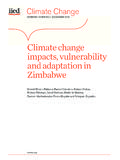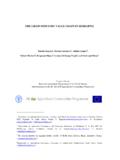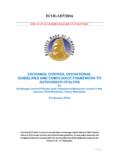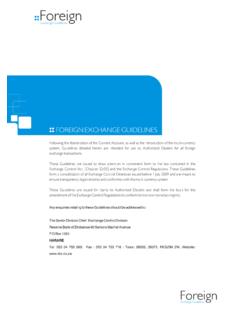Transcription of The impact of remittances in Lesotho, Malawi and Zimbabwe
1 The impact of remittances in lesotho , Malawi and Zimbabwe Sarah Truen, Warren Jitsing, Kemedi Kgaphola, Stephen Chisadza, Moeketsi Majoro, Foshizi, Litsebe Jimson, Imani Consulting, Africa Corporate Advisors Prepared for FinMark Trust December 2016. The impact of remittances in lesotho , Malawi and Zimbabwe 2016. Contents Executive summary .. 3. 1. Introduction .. 20. 2. Understanding the impact of remittances on poverty .. 20. Paths from poverty .. 20. Access to finance and remittances .. 28. impact at macroeconomic level ..30. Summary conclusions .. 35. 3. lesotho ..37. remittance remittances at macroeconomic 40. remittance impact and use of formal financial channels at household level .. 42. remittance senders .. 42. remittance recipients .. 48. Statistical evidence of remittance impact .. 53. 4. Malawi .
2 57. remittance 58. remittances at macroeconomic 60. remittance impact and use of formal financial channels at household level ..61. remittance senders .. 62. remittance recipients .. 69. 1|P a g e The impact of remittances in lesotho , Malawi and Zimbabwe 2016. Statistical evidence of remittance impact .. 75. Pattern of remitting ..76. impact of remittances .. 82. 5. Zimbabwe .. 86. remittance 87. remittances at macroeconomic 88. remittance impact and use of formal financial channels at household level .. 90. remittance senders .. 90. remittance recipients .. 99. Statistical evidence of remittance impact ..106. 6. Key research themes ..109. 7. Conclusions .. 112. 113. Appendix 1: Fieldwork design ..119. Appendix 2: IHS3 statistical analysis, Malawi .. 122. 2|P a g e The impact of remittances in lesotho , Malawi and Zimbabwe 2016.
3 Executive summary Households in sub-Saharan Africa have a long tradition of cross-border migration and associated remittances . During periods of economic or political instability, or simply when opportunities at home are scarce, the funds remitted by migrants are a lifeline that can help keep food on the table, children at school, and roofs over heads. However, from an academic perspective, remittances have not always been viewed favourably, with many commentators expressing concern over the hollowing out of economically active populations from the communities from which migration occurs, and the possible subsequent inflationary pressures which remitted funds may cause in those communities. Increasingly, the literature increasingly reflects a more nuanced view of the economic role played by remittances .
4 A key insight has been that, while remittances can and do play a role in supporting development in origin communities, remittances alone are not sufficient to deal with the often severe economic problems that spurred migration to begin with. Any examination of the impact of remittance receipt on entrepreneurship, for example, must acknowledge that the quality of the business environment may have a severely dampening effect. Even so, evidence is growing that remitted funds tend to support productive investments and activities in origin communities, via a number of channels: - Human capital formation: by supporting household consumption and educational expenditures, remittances support better human capital outcomes in recipient households - Improving market access: cash remittances improve the ability of recipients to access formal markets, and in doing so improve their productive capacity.
5 For example, remittances may provide the cash necessary to purchase fertilisers and improve agricultural output, or may mitigate against the impact of lack of access to financial services - Asset accumulation: the accumulation of both human capital and physical assets can play an important role in facilitating the movement of households out of poverty, and the receipt of remittances may help to finance such asset accumulation Given these insights, we examined evidence of the impact of remittances on the communities and economies of lesotho , Malawi and Zimbabwe . The research combined a review of existing literature, primary research among remittance senders and recipients, and original data analysis; and explored the mechanisms by which remittance receipt affects developmental outcomes. 3|P a g e The impact of remittances in lesotho , Malawi and Zimbabwe 2016.
6 lesotho lesotho has only million inhabitants, 27% of which are urbanised, and GDP per capita in USD in 2014 was $1 remittance inflows have historically been a major source of foreign exchange, accounting for as much as 44% of GDP as recently as 2006, for example2 (although by 2014 this had fallen to 17% of GDP). These substantial remitting levels have been driven by equally substantial migration to South Africa in particular. The backbone of Basotho remittances from South Africa has traditionally been the mining industry, which employed large numbers of Basotho. However, these numbers have declined rapidly. For example, while almost 65 000 Basotho were employed on South African mines in 2000, by 2015. that number had declined to only 27 Partially compensating for this decrease in mainly male migrants to the mines, the level of female migration has been However, female migrants are more likely to be involved in lower-paid occupations such as informal trading or domestic work,5.
7 Which affects the amount they are able to remit. Compared to other regional remittance corridors, remittances to lesotho via formal channels are particularly affordable. This is no doubt influenced partially by the extent of financial sector innovation in this market, and the associated high levels of competition. However, lesotho is also affected by the fact that most remitters are based in South Africa, and regulatory barriers to the transmission of money between South Africa and lesotho are fairly low, because they are both members of a Common Monetary Area. 1. World Bank Databank, all data for 2015 unless otherwise specified. 2. Central Bank of lesotho online statistical sources, World Bank Databank, DNA calculation 3. Central Bank of lesotho online statistical sources 4. (Dodson, et al., 2008, p.)
8 14). 5. (Dodson, et al., 2008, pp. 13, 26). 4|P a g e The impact of remittances in lesotho , Malawi and Zimbabwe 2016. Primary research with remittance senders provided considerable insight as regards the reasons for migration. A combination of the push factors of extreme poverty at home, and the pull of better wages in South Africa for similar positions, drove most respondents. I came here in Gauteng looking for a better life because there's nothing in lesotho , there's no rain, and the fields are dying, I've got kids, I have to think like a man. I told my wife that Madisebo I'm leaving, I'm heading to Gauteng to look for a job so that my kids can live and go to school then that's when I came to Gauteng, that was the decision. lesotho male focus group Moderator: Do they ask for money at home or you just send it or it is compulsory?
9 General consensus: It is compulsory Respondent 1: It's compulsory, what will they eat, what are they going to wear? Respondent 2: You rather sleep with an empty stomach in order for them to eat lesotho male focus group Respondents used a wide range of remittance channels, both formal and informal, and the popularity of the new Shoprite channel was evident. Respondents seemed to have fairly good knowledge of the range of remitting options open to them, and seemed happy to switch to more competitive offerings, which is borne out by the quick success of the Shoprite product offering. While some respondents had difficulty accessing bank accounts, bank transfers were the most commonly used form of remitting, with 16 of 37 respondents using them. Respondents mentioned general groceries and school fees when asked what the money they sent would be used for.
10 Most do not dictate to recipients how the money would be spent: some respondents mentioned the practical difficulty of it being hard to tell what the priorities at home were as the reason for rather sending money; but a key concern seemed to be the effect it would have on family dynamics for the sender to try and dictate how money should be spent to a family authority figure. It's better to send money because you don't know what they need. 5|P a g e The impact of remittances in lesotho , Malawi and Zimbabwe 2016. lesotho male focus group While some respondents had tried to start businesses at home, they had achieved little success. Business opportunities did present themselves, particularly to take advantage of the relative cheapness of things like clothing in South Africa as compared to lesotho . But even with these obvious commercial opportunities, the operating environment in lesotho was very tough.









